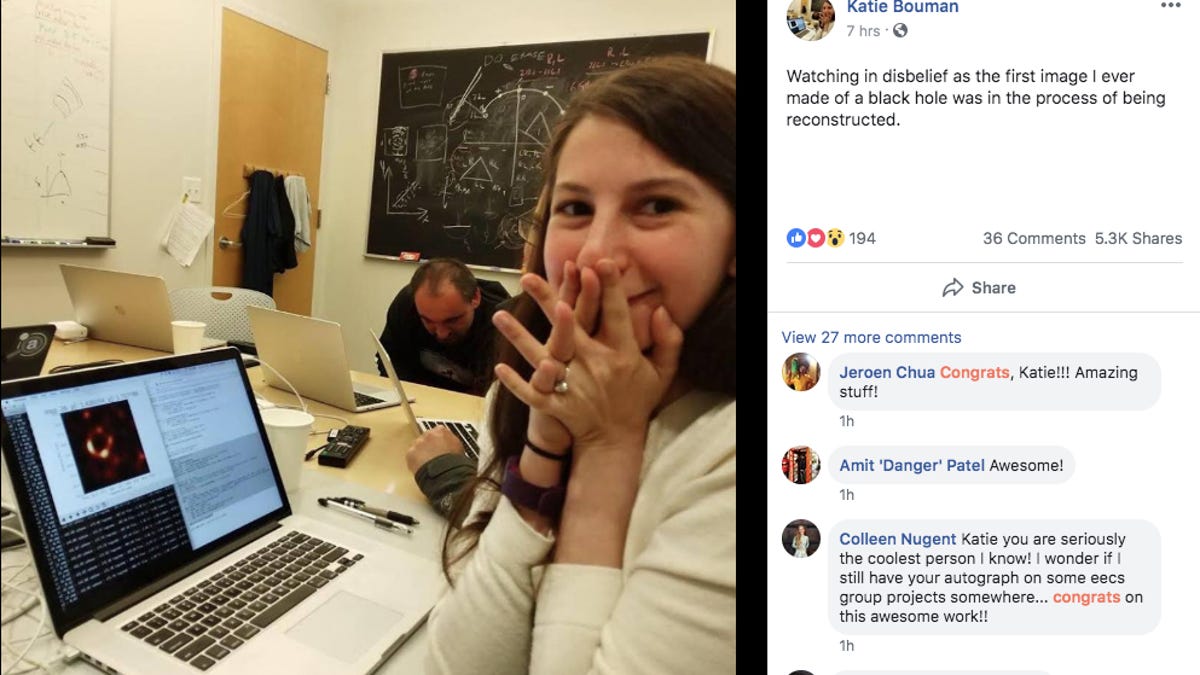Meet Katie Bouman, the woman who helped transformed our view of black holes forever
Bouman helped develop the algorithm used for the Event Horizon Telescope. Now she's the toast of social media.

Social media wants you to know Katie Bouman's name.
It's been a huge day for science. And an even bigger day for female scientists.
On Wednesday, we Earthlings got our first direct look at a black hole, thanks to the Event Horizon Telescope, an array of eight radio telescopes around the world working together to create the image. But in the midst of making jokes about how that photo kinda sorta looks the eye of Sauron and wondering how this newfound information could impact Albert Einstein's theories of gravity, social media focused on making sure one of the women behind the project gets credit for her contributions.
Katie Bouman, an MIT grad, helped develop a computer program while still in school. Along with others, it helped create the image of the black hole. She also led testing to verify the images.
Part of what's made her popular are two photos that spread across social media. In one photo from the BBC, Bouman is standing next to a table stacked with hard drives of data. Some people remarked that the photo is reminiscent of an iconic 1969 image of Margaret Hamilton with the printout of the Apollo guidance software code she and her team developed.
Computer scientist Katie Bouman and her awesome stack of hard drives for #EHTblackhole image data 😍 — reminds me of Margaret Hamilton and her Apollo Guidance Computer source code. 👩🏽🔬 pic.twitter.com/MgOXiDCAKi
— Flora Graham (@floragraham) April 10, 2019
Another reason her name's suddenly shooting around social media: history has rarely given women scientists the recognition they deserve. Take Hidden Figures, for example, which told the story of the women who calculated John Glenn's flight trajectory.
#KatieBouman should be trending. #WomeninSTEMAreAwesome #EHTBlackHole https://t.co/A1EZ3gHF88
— Rebecca Bollwitt (@Miss604) April 10, 2019
Bouman did not immediately respond to a request for comment, but told CNN, "No one of us could've done it alone. It came together because of lots of different people from many backgrounds."
She also posted a photo on Facebook of her reaction to seeing the black hole images.
Congratulations to Katie Bouman to whom we owe the first photograph of a black hole ever. Not seeing her name circulate nearly enough in the press.
— Tamy Emma Pepin (@TamyEmmaPepin) April 10, 2019
Amazing work. And here’s to more women in science (getting their credit and being remembered in history) 💥🔥☄️ pic.twitter.com/wcPhB6E5qK
The big black hole image story trending today: the core of this work is the PhD research of MIT grad student Katie Bouman! Remember her name! (Most news articles are not mentioning her) https://t.co/2LoeS3O3Z8
— Avinash Collis (@avi_collis) April 10, 2019
Bouman delivered a TED talk in 2016 called "How to take a picture of a black hole," where she explained "getting this first picture will come down to an international team of scientists, an Earth-sized telescope and an algorithm that puts together the final picture."

